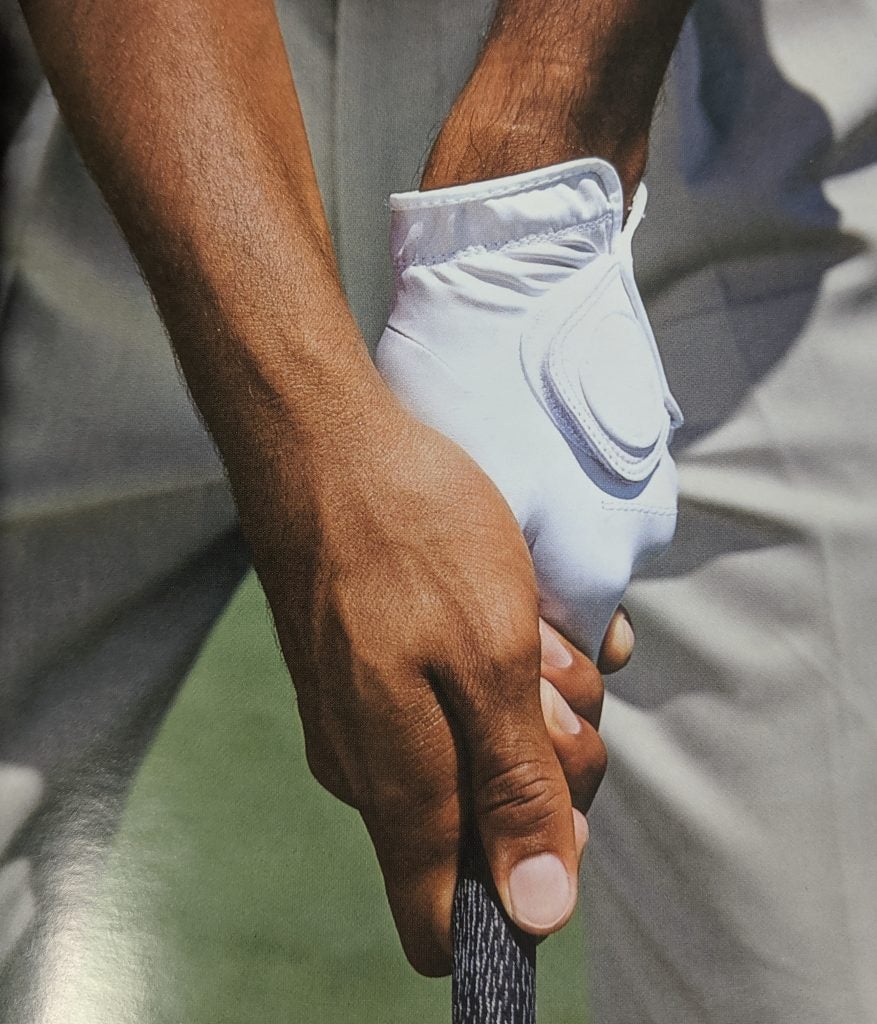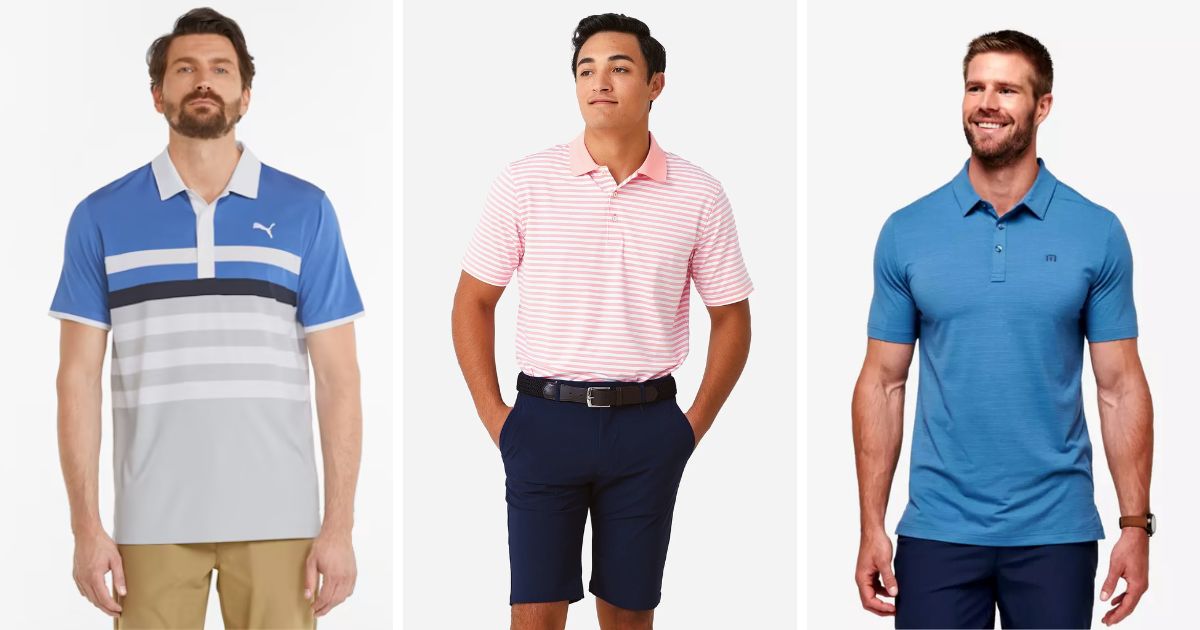Table of Contents
Understanding the Basic Golf Grip
One of the first things any beginner golfer needs to learn is how to properly grip the golf club. An improper grip can lead to inconsistent shots, lack of power and accuracy, and can prevent you from improving as a player. Even Tiger Woods focuses a great deal on perfecting his grip.
Where Should You Feel the Pressure in Your Grip?
When holding the club, the pressure points should be mainly in your last three fingers - your ring finger, pinky finger, and the pad underneath your palm. Your index finger and thumb should provide support, but not bear too much tension.
Gripping too tightly with all fingers and the palm is a common mistake beginners make. This leads to tense forearms and hands, restricting the wrists and clubface from releasing naturally through impact. It also causes the club to open or close, leading to slices, hooks, and topped shots.
Finding the Proper Hand Placement
Start off by taking your basic stance without a club, arms hanging straight down and palms facing each other. Then pick up the club with your dominant hand and slide your palm over the grip until the meaty part at the base of the fingers sits on top.
Wrap your last three fingers around the club, feeling the pressure in the fingers and palm pad. Avoid gripping too much with the ring finger, as this can restrict wrist hinge.
With your non-dominant hand, grip the club in the same manner, placing the pinky finger of this hand somewhere between the index and middle finger of the lead hand.
Checking Your Grip Alignment
Once you've grasped the club, check to make sure your hands and the clubface are aligned properly. Do this by holding the club out in front of you at waist height, keeping your feet together.
The clubface should be square, pointing straight back at your body. If the toe of the club points left, you likely have a weak grip; if the toe points right, it's probably too strong.
Make adjustments by rotating your hands slightly clockwise or counterclockwise until the clubface squares up. The club branding and alignment lines can help you visualize this.
Grip Styles Used by Professional Golfers
While the basics are universal, grips can vary slightly between players. Understanding different gripping techniques can help you figure out what works best for your body type, swing mechanics, and shot shaping preferences.
The Tiger Woods Grip
Tiger Woods utilizes a unique style that's relatively neutral, promoting a square clubface through impact. His left thumb typically rides just off-center down the grip, allowing great control and consistency.
With his lead hand, Tiger positions his palm deeply into his fingertips, utilizing the pressure points discussed earlier. He eliminates tension in the palm, maintaining sensitivity for optimal release.
Woods has changed his right-hand grip position over time, but often uses what's called a "reverse overlap" - his pinky finger crosses over his index finger instead of the traditional overlap.
Strong, Weak, and Neutral Grips
Beyond fundamentals like hand placement and pressure points, grips can also be categorized based on their orientation relative to the clubface. This influences shot shape and launch angle.
A strong grip sees both hands rotated further below the club - the lead hand clockwise and trail hand counterclockwise. This closed face promotes draws and higher launch.
Weak grips do the opposite, opening the clubface slightly to promote fades and lower ball flight. Neutral grips like Tiger's keep the face square to the target at address.
Interlocking and Overlapping Grips
Some players interlock the pinky finger of the lead hand with the index or middle finger of the trail hand, while others opt for a simple finger overlap.
Interlocks promote consistency but reduce sensitivity in the fingers. Overlaps provide more feel and natural hinging of the wrists and are utilized by players like Tiger Woods.
How to Practice Improving Your Golf Grip
Besides analyzing other players, a few simple drills will ingrain proper technique until gripping the club correctly becomes second nature.
Use Impact Bags and Alignment Rods
Practice gripping straight into impact bags, which force your hands and club into the proper position. You can also make practice swings while holding alignment rods pointed at your body - if the rods deviate, your grip needs adjustment.
Take Practice Swings Without Re-Gripping
After setting your grip, take multiple practice swings without allowing your hands to move or slip on the club. This builds muscle memory and eliminates inconsistency.
Focus On Grip Pressure
Make half and three-quarter swings while consciously focusing on maintaining the proper pressure points and centering your hands on the club. Eliminate any death grips or tension while keeping the club secure.
Hit Shots With Your Eyes Closed
While your practice partner watches ball flight, feel where the club makes contact by hitting shots with your eyes closed. Solid impact should match what you felt in your grip pressure and hand placement, telling you if your mechanics are sound.
Mastering the basics of a proper golf grip takes practice, but is one of the easiest ways to develop a more reliable, powerful game with better ball striking. Use cues like hand placement, grip pressure, and clubface alignment to analyze and correct your technique.
FAQs
Where should the pressure points be in my golf grip?
The pressure points should be mainly in your last three fingers - your ring finger, pinky finger, and the pad underneath your palm. Gripping too hard with the whole hand leads to tension that restricts your wrists.
What is the best hand placement for gripping a golf club?
Start by placing the club in your dominant hand. Slide your palm over the grip until the base of your fingers sit on top. Wrap your last three fingers around, keeping the ring finger relaxed. Grip with the trail hand using the same technique, with the pinky between the lead hand's index and middle finger.
How can I tell if my golf grip alignment is correct?
Hold the club out in front of you at waist height, keeping your feet together. The clubface should point straight back, perpendicular to your toes. If the toe points left or right, rotate your hands until the clubface squares up.
What's the best way to practice improving my golf grip?
Use training aids like impact bags to ingrain proper hand placement. Take practice swings focusing on consistent pressure points in the fingers and eliminating tension. Hit shots with your eyes closed to reinforce solid ball-striking.






.jpg)
.jpg)






